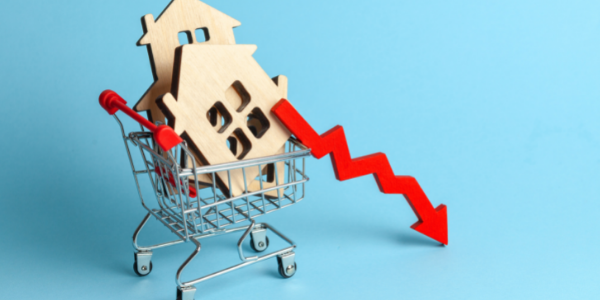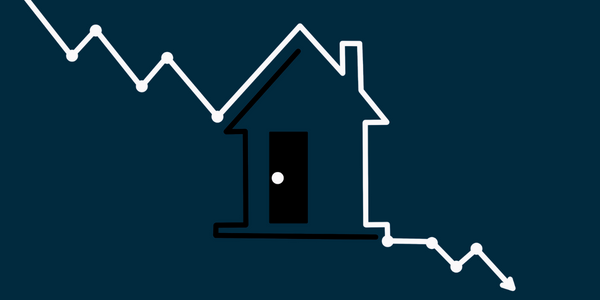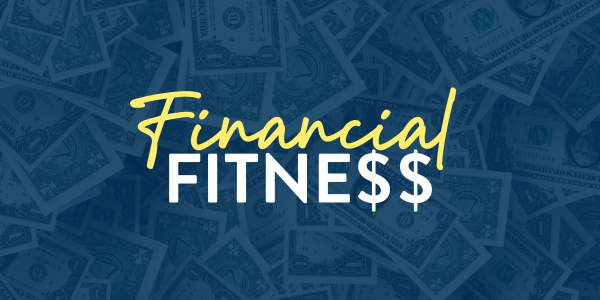
There are a few really important numbers when it’s time to obtain a home loan: your credit score, the amount you want to borrow, and the interest rate. The news is full of talk about interest rates lately. Will they go up? Will they go down? Will they stay down? When they go up, how far will they go?

It’s a losing battle to follow the news on mortgage interest rates on a daily basis if you’re hoping to lock in the best possible loan rate. However, you can certainly get a sense of key trends by keeping your eyes and ears open when it comes to the 10-year Treasury, Federal Reserve, and mortgage interest rates.
Before you do that, you’ll want to make sure you understand what factors influence mortgage rates.
Economic Health & Supply and Demand
The overall economy affects mortgage rates. When the gross domestic product (or GDP) and employment rise, it’s a sign of a growing economy, so there is a greater demand for goods and services, including real estate. A growing economy creates competition from those wishing to borrow money. This demand causes interest rates to rise.
The opposite is true in a slowing economy. When demand falls, interest rates tend to go down.
In terms of home loans, the “supply” is the money (or credit) available to lend. A high demand for mortgages means banks have less money to lend; therefore, the cost of a loan goes up via higher interest rates.
This also means that when there is more money to lend, or an increase in the supply of credit, the cost of borrowing goes down in the form of reduced interest rates.
Another factor is how other debts impact a bank’s ability to lend money. For example, a missed credit card payment or mortgage payment will reduce the amount of credit available in the market. When the credit supply tightens, that creates higher interest rates.
Inflation
Everyone is affected by inflation. You, your mom, your dry cleaner, and even your bank.
Inflation occurs when the money supply used to purchase products exceeds the products available for purchase. The bigger the gap, the higher the inflation. Put another way, a high rate of inflation means your dollar doesn’t go as far. You have to do more with less.
Higher inflation will typically cause Treasury yields and mortgage rates to rise as well. This occurs because investors demand higher rates as compensation for the decrease in the purchasing power of money they are paid over the course of the loan.
The Fed
Talk about something that has dominated the news lately! When the Fed—short for the Federal Reserve—raises or lowers the federal funds rate, which is the rate lenders charge one another, it can create a ripple effect resulting in higher or lower mortgage rates. While the Fed Rate doesn’t have a direct impact on mortgage rates, it impacts many markets, which do impact rates.
This rate can be as low as ZERO, if you can believe it, and it affects the bottom line of those offering credit. When the Fed is trying to control inflation, or cool the market, the start raising this rate, usually in increments over time. When they’re trying to spur the economy, they start lowering the federal funds rate.
While it’s good to keep an eye on what the Fed is doing, it’s more important to watch the economy as a whole, and pay attention to Treasury Yields to get a better indicator.
Geopolitical Factors
The global economy is tied together more closely today than ever before. Global economic factors and other world events can move interest rates in the United States—even with events that seem to have no direct correlation to the U.S. economy.
Government Intervention
The U.S. government may step in to help influence interest rate movement when necessary. This is primarily accomplished when the government directly purchases bonds and other securities for sale in the open market.
In short, when the economy is strong and growing, rates rise to make this investment vehicle more attractive to investors. When the economy is slow or sluggish, borrowers become choosier with how they spend their money, so rates fall to attract more investors.
Special Circumstances
That’s the general lowdown on factors that influence mortgage rates … but we probably know what you’re thinking. “Wait a minute, the demand for mortgages is high right now, yet rates are super-low. That isn’t in line with what you just said!”
There are certain factors and environments that can override these broad trends. The pandemic, for example, would be one of them. The Great Recession is another. Election years, war, natural disasters, and even the price of oil can influence interest rates. You can read more about the surprising factors that influence rates here.
Now that we know the macro reasons interest rates change, let’s talk about the micro reasons—those are the ones that personally affect you!
Credit
No surprise here. Mortgage lenders want to feel confident that you’ll pay back your loan. They’re willing to trade a lower interest rate for this peace of mind.
Though every lender is different, borrowers with a credit score above 700—in some cases 620—typically get the best interest rate offers.
Don’t fret if your credit isn’t perfect. There are plenty of ways to raise your score. A trusted APM Loan Advisor is also available to discuss your unique credit journey and homeownership goals with you.
While we’re on the subject of credit scores, here’s another perk of a higher score: The cost of private mortgage insurance, or PMI, is reduced. PMI is required on a home loan if you’re putting less than 20% down.
The Type of Home You’re Buying
A house is a house … right? The literal structure may be, but the use of the house means a great deal to lenders. Borrowers who plan to occupy the home as a primary residence will receive the best mortgage rates.
You’ll have a higher rate if you’re buying a second home. Also known as a vacation property, a second home is a place you plan to live in at some point in the year that won’t be rented out to others.
If you do plan to rent out your second home—either long term or short term—that is considered an investment property, which tends to come with the highest rates.
You’ll also pay a higher interest rate if you’re buying a condo or townhome, as opposed to a single-family house.
Down Payment
Lenders are all about mitigating risk, so the more skin you have in the game, the better they feel about you as a borrower.
That’s why mortgage lenders prefer the standard 20% down. Some lenders are okay with 15%, while others can tolerate 10% (even less with certain loans, such as FHA or VA). Whatever their level of tolerance is, if you’re outside that, you may get hit with a higher rate.
And don’t forget, less than 20% down means private mortgage insurance. PMI typically equals about half a percent of the loan amount. One way to look at this is that PMI is raising your interest rate by about 0.5 percentage points.
Interest rates will continue to be a big topic as the housing market stays hot. If you’re thinking about buying a home, now may be the time before historically low rates disappear completely.
An APM Loan Advisor is always here to answer your questions and get you started on the path to homeownership.









